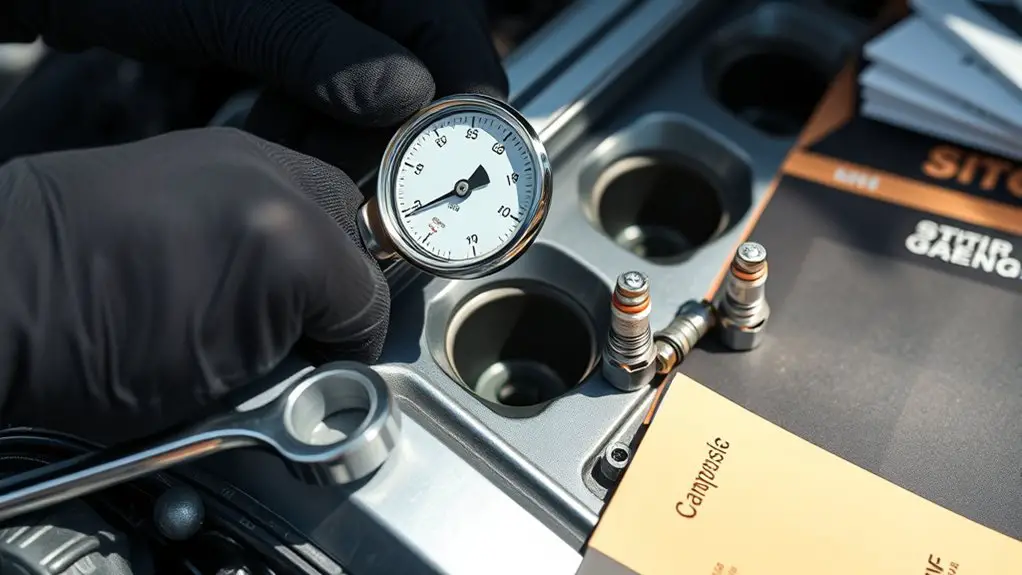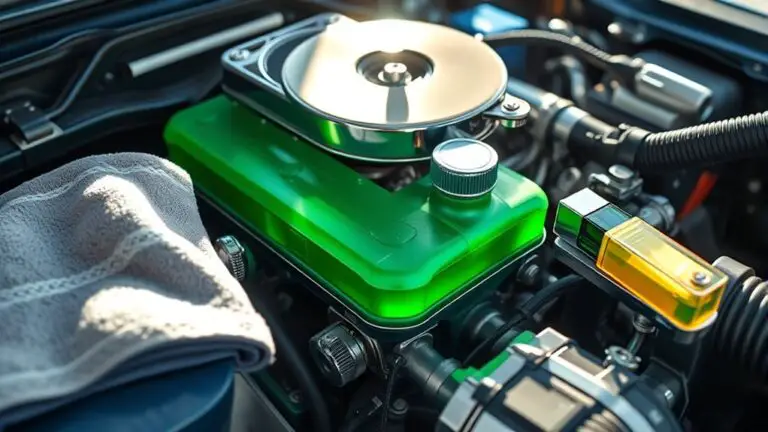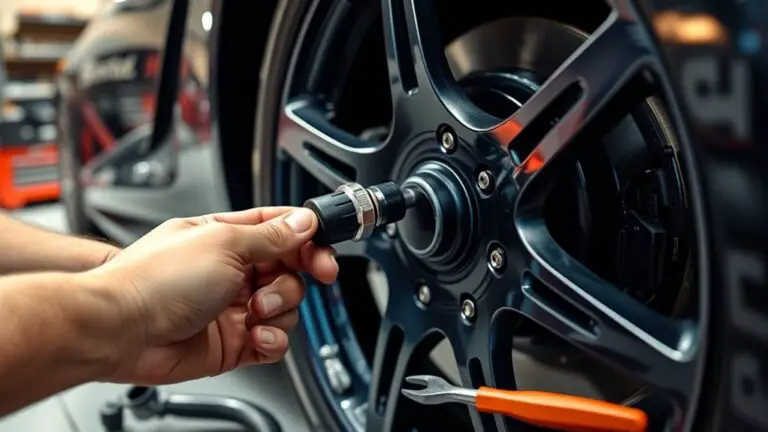How to Diagnose Low Compression in a Compact Car Engine
To diagnose low compression in your compact car engine, first listen for reduced power during acceleration and difficulty starting. Use a compression gauge to perform a test by removing spark plugs and cranking the engine. Record the compression readings for each cylinder. Compare them to manufacturer specifications; significant discrepancies indicate issues. Look for signs like worn piston rings or valve problems as potential causes. Understanding these factors can guide you in resolving low compression effectively.
Understanding Engine Compression

Engine compression is a critical factor in a vehicle’s performance, directly influencing efficiency and power output. It refers to the process of compressing the air-fuel mixture within the cylinder before ignition. Higher compression ratios generally lead to improved engine efficiency, as they allow for a more complete combustion process. This increased efficiency means more power is generated from the same amount of fuel, translating to enhanced performance and fuel economy.
When you understand engine compression, you can appreciate how it impacts your vehicle’s overall functionality. A well-tuned compression ratio helps achieve a more vigorous combustion process, resulting in faster throttle response and greater torque. Conversely, low compression can hinder the engine’s ability to produce power, affecting acceleration and responsiveness. Being aware of these dynamics enables you to maintain peak engine performance, ensuring your vehicle remains a reliable, efficient machine that supports your desire for freedom on the road.
Signs of Low Compression

If you’re experiencing a decline in engine performance, it could be a sign of low compression. Additionally, you might notice unusual noises during operation, which can further indicate underlying issues. Recognizing these symptoms early can help you address potential compression problems before they escalate.
Engine Performance Decline
While you may notice a decline in your vehicle’s performance, it could be a sign of low compression in the engine. This issue often surfaces as a result of engine wear or poor fuel quality. Here are some common signs to look out for:
- Reduced power during acceleration
- Increased fuel consumption
- Difficulty starting the engine
These symptoms can greatly impact your driving experience and may indicate underlying problems. If you’ve been feeling less freedom on the road, it’s essential to address these issues promptly. Low compression can lead to further damage, so diagnosing the problem early can save you from costly repairs down the line. Stay vigilant for these signs to keep your engine running at its best.
Unusual Noises During Operation
Unusual noises during operation can be a telling indicator of low compression in your engine. If you start hearing knocking sounds, it may suggest that the piston isn’t achieving proper cylinder pressure, leading to inefficient combustion. This symptom often results from worn piston rings or valves not sealing correctly. Additionally, ticking noises could point to issues with the valve train or insufficient lubrication, which can also stem from low compression scenarios. These sounds typically indicate that your engine’s components aren’t functioning harmoniously, compromising performance. Ignoring these noises could lead to more severe engine damage, so it’s essential to diagnose the underlying issues promptly. Regular monitoring can help maintain your engine’s health and performance, ensuring a more enjoyable driving experience.
Tools Needed for Diagnosis

To accurately diagnose low compression in a car engine, you’ll need specific tools. An essential compression gauge, an engine leak tester, and a vacuum pressure gauge are critical for this process. Each tool plays a crucial role in identifying the root causes of compression issues.
Essential Compression Gauge
An essential tool for diagnosing low compression in a car engine is a compression gauge. Selecting the right gauge is vital, as various compression gauge types exist, each suited for different applications. To guarantee accurate readings, gauge calibration is of utmost importance.
- Mechanical Gauges: Provide direct readings and are user-friendly.
- Digital Gauges: Offer enhanced accuracy and data logging capabilities.
- Threaded Adapters: Assure compatibility with various engine types.
Using a compression gauge allows you to pinpoint compression issues effectively, enabling you to take corrective action. Remember, an accurate gauge and proper calibration can make all the difference in diagnosing engine performance, giving you the freedom to tackle any challenges head-on.
Engine Leak Tester
After using a compression gauge to assess the engine’s compression levels, the next logical step in diagnosing potential issues is employing an engine leak tester. This tool allows you to pinpoint where an engine leak might be occurring. By introducing compressed air into the cylinder, you can listen and observe for escaping air, which indicates faulty components like valves, piston rings, or gaskets. It’s vital to conduct this test with the engine at a specific temperature to guarantee accurate readings. If you notice significant air loss, you’ll need to further investigate the affected areas. Utilizing an engine leak tester alongside your compression tester provides an extensive analysis, making sure you diagnose and address low compression issues effectively.
Vacuum Pressure Gauge
A vacuum pressure gauge is an essential tool for diagnosing low compression in a car engine. By measuring the vacuum pressure, you can identify issues like vacuum leaks and pressure fluctuations that may indicate compression problems.
- Identify vacuum leaks: A steady reading can indicate the integrity of the intake system.
- Monitor pressure fluctuations: Irregular readings may point to valvetrain issues or cylinder head problems.
- Assess engine performance: Consistent vacuum levels help gauge overall engine health.
Using a vacuum pressure gauge, you’ll gain insight into the engine’s condition. You can detect subtle issues before they escalate into major repairs, granting you the freedom to maintain your vehicle’s performance.
Performing a Compression Test
Performing a compression test is an important step in diagnosing low compression issues in a car engine. To begin, you’ll need a compression gauge and basic tools. First, remove the spark plugs to guarantee accurate readings. Next, connect the compression gauge to the first cylinder, then crank the engine several times until the gauge stabilizes. This step is essential for confirming compression test accuracy.
Follow the same compression test procedures for each cylinder, recording the values. Consistent readings across cylinders suggest a healthy engine, while significant discrepancies indicate potential problems. Remember, a compression test not only helps identify low compression but also reveals issues like valve or piston ring failures. It’s crucial to follow these procedures meticulously to obtain reliable data that can inform your next steps in troubleshooting. A thorough test lays the foundation for effective diagnosis and repair.
Interpreting Compression Test Results
Interpreting compression test results is essential for diagnosing engine health. By analyzing these results, you can better understand your engine’s performance and identify issues related to compression ratios and cylinder sealing.
Analyzing compression test results is crucial for diagnosing engine health and identifying performance issues.
- A normal compression ratio typically ranges between 10:1 and 14:1 for most compact car engines.
- Significant variations between cylinders may indicate poor cylinder sealing or internal damage.
- Low compression readings can suggest issues like worn piston rings or leaky valves.
When you assess the results, compare each cylinder’s readings to one another and to the manufacturer’s specifications. If the numbers are low or inconsistent, it’s a clear signal that further investigation is necessary. Remember, a healthy engine should exhibit uniformity in compression, and deviations can lead to decreased performance and increased emissions. By accurately interpreting these results, you empower yourself with the knowledge to address potential engine problems effectively.
Identifying Possible Causes of Low Compression
When diagnosing low compression, it’s vital to take into account various potential causes that could be affecting engine performance. Common issues include worn pistons or cylinder wear, which can lead to loss of sealing and reduced pressure. Valve problems, such as improper seating or damage, can also contribute greatly to low compression. A compromised head gasket may allow coolant or oil to mix with combustion gases, further lowering compression levels. Additionally, carbon buildup can obstruct valves, hindering their ability to close properly. Oil leakage into the combustion chamber can create a similar problem, reducing effective pressure. Don’t overlook fuel quality and ignition timing; poor fuel can cause incomplete combustion, while improper timing can lead to misfires, affecting overall engine performance. Identifying these factors is vital for determining the root cause of low compression in your compact car engine.
Repair Options for Low Compression Issues
While low compression can signal various underlying issues, addressing these problems promptly is vital to restoring engine performance. You’ve got several repair options depending on the severity of the issue:
- Cylinder head gasket replacement: This can fix leaks that lead to compression loss.
- Piston ring replacement: Worn rings can cause significant compression drops.
- Full engine rebuild: If damage is extensive, rebuilding the engine may be necessary.
Choosing the right repair techniques is important. For minor issues, replacing gaskets or rings might suffice. However, significant wear might require an engine rebuild to guarantee long-term reliability. You’ll want to weigh the costs and benefits, as a rebuild can offer freedom from recurring problems. Addressing low compression issues effectively means you can enjoy a smoother, more powerful driving experience without constantly worrying about engine performance.
Preventive Measures for Maintaining Engine Compression
To maintain ideal engine compression, it’s crucial to implement regular maintenance practices that can preemptively address potential issues. Start with routine maintenance, including regular oil changes. Using high-quality engine oil not only lubricates moving parts but also helps reduce wear and prevents sludge buildup, which can compromise compression over time.
Additionally, inspect and replace air filters as needed. A clean air filter guarantees optimal air flow, directly influencing combustion efficiency and overall engine performance.
Don’t neglect the cooling system; overheating can lead to warped components, negatively affecting compression. Regularly check hoses and coolant levels to prevent leaks.
Finally, stay vigilant about spark plug condition. Worn or fouled plugs can disrupt the combustion process, causing lower compression. By adhering to these preventive measures, you’ll greatly enhance your engine’s longevity and maintain peak performance, giving you the freedom you desire on the road.
Frequently Asked Questions
Can Low Compression Affect Fuel Efficiency in My Compact Car?
Yes, low compression can notably affect your compact car’s fuel efficiency. When compression is low, the engine struggles to achieve ideal performance, leading to incomplete combustion. This results in higher fuel consumption as the engine compensates for the lack of power. You might notice decreased acceleration and overall engine performance, which can translate to increased fuel costs. Monitoring compression levels is essential for maintaining both efficiency and the longevity of your vehicle.
How Often Should I Check Engine Compression?
You should check your engine compression every 30,000 miles or during routine engine maintenance. Think of it as a health check-up for your vehicle; consistent compression testing can reveal underlying issues before they become major problems. Regular checks not only guarantee peak performance but also grant you the freedom of reliable driving. By staying proactive, you can maintain your car’s efficiency and avoid costly repairs down the road.
Is Low Compression a Sign of Engine Failure?
Yes, low compression can indicate potential engine failure. It often leads to poor engine performance, causing issues like reduced power and efficiency. If compression is low, it’s essential to diagnose the underlying cause, as repair costs can escalate quickly if not addressed. Ignoring the problem may lead to more severe damage, resulting in costly repairs or even engine replacement. Staying proactive can save you both time and money in the long run.
Can I Fix Low Compression Issues Myself?
You can tackle low compression issues yourself, but it requires careful analysis and skill. Think of your engine as a heart; it needs perfect rhythm to run smoothly. Start with compression tests to pinpoint the problem. If it’s a simple gasket issue or valve problem, DIY repairs might restore that rhythm. However, if it’s more complex, knowing when to seek professional help can free you from potential frustration and guarantee lasting performance.
What Are the Long-Term Effects of Low Compression?
Low compression can greatly impact your engine’s longevity and lead to performance decline. Over time, this issue can cause increased wear on engine components, resulting in inefficiencies and potential breakdowns. You’ll likely notice reduced power output, poor fuel economy, and rough idling. If left unaddressed, low compression can escalate into more severe problems, such as complete engine failure, necessitating costly repairs. Staying proactive about engine health is essential for maintaining performance and reliability.







